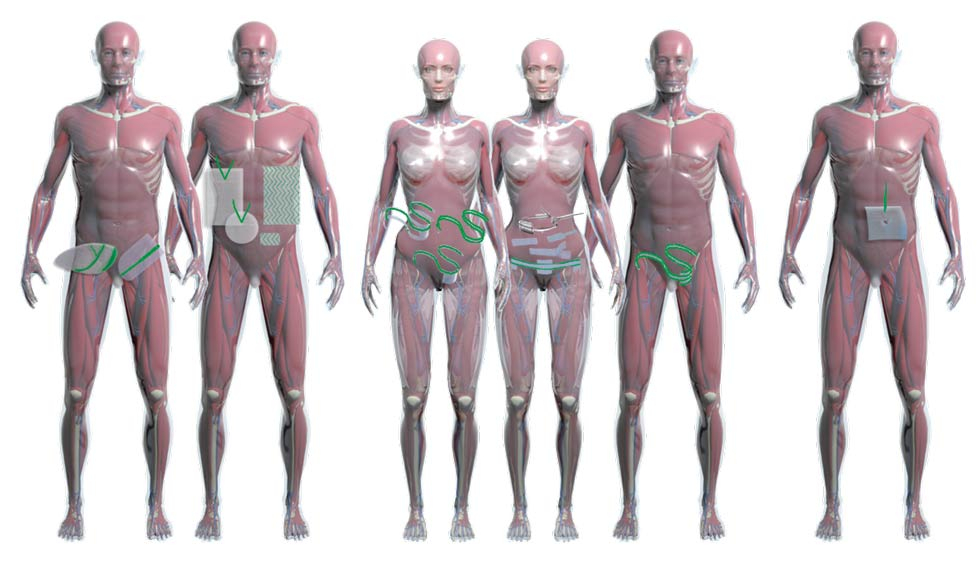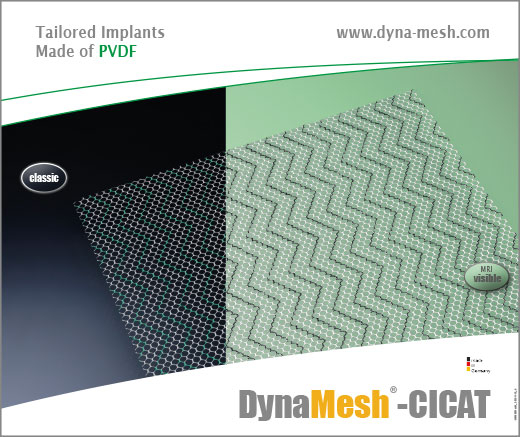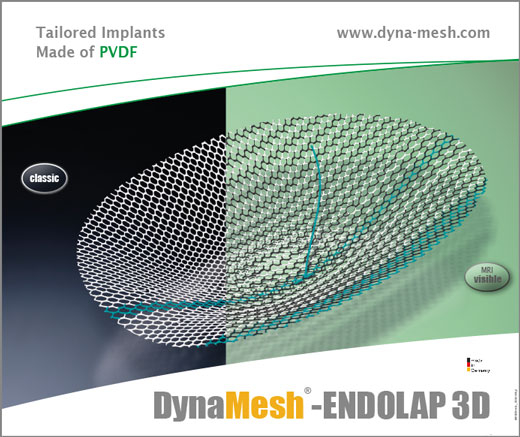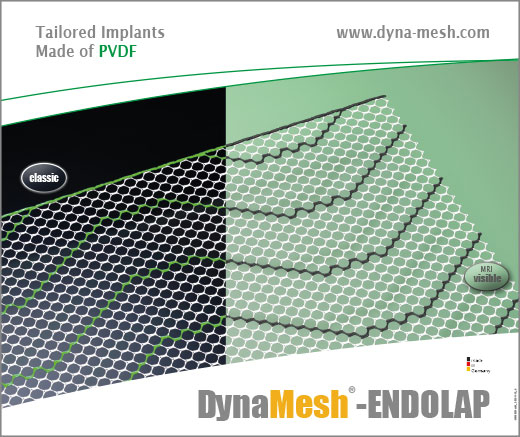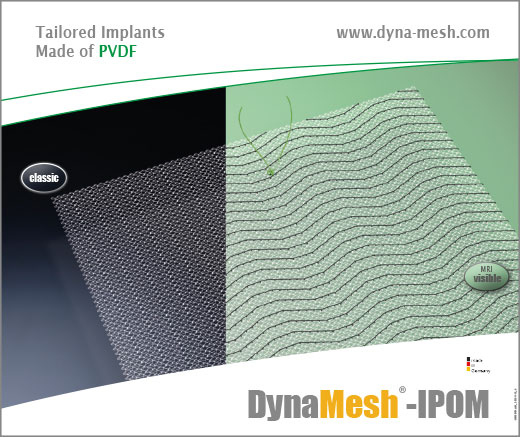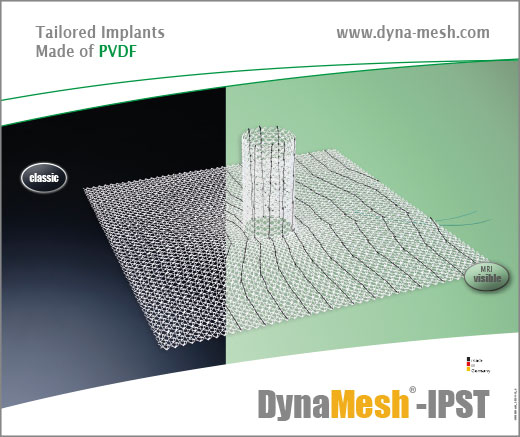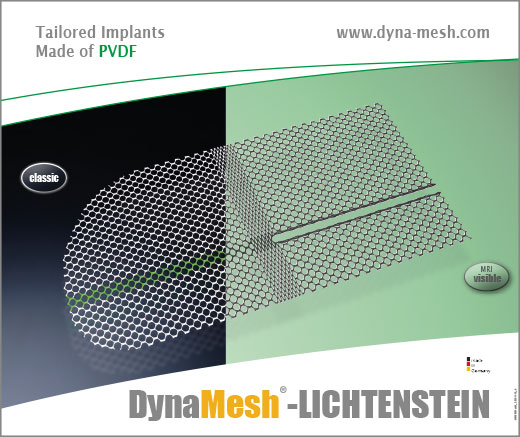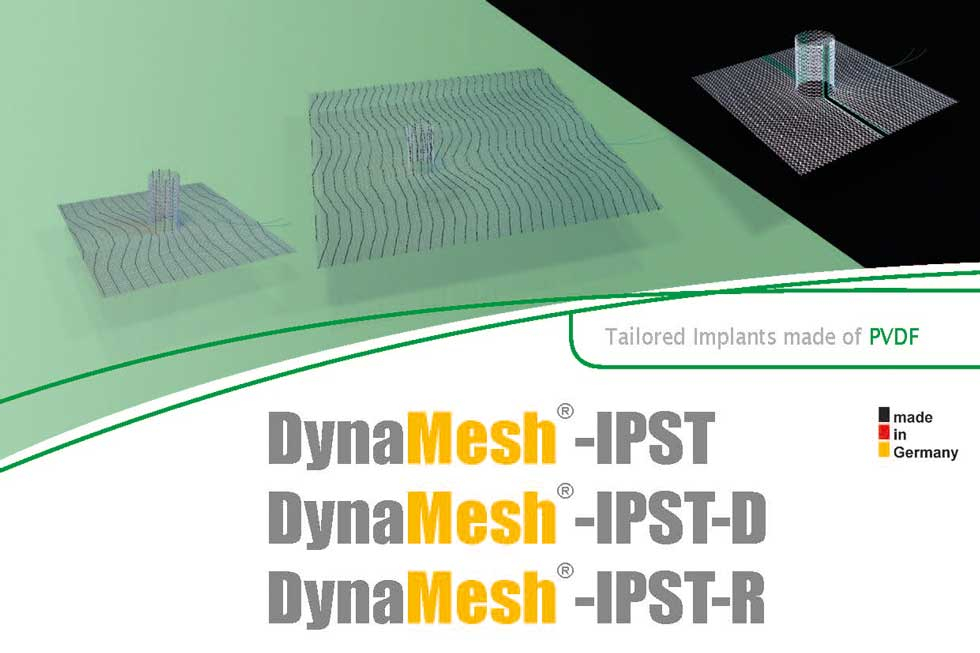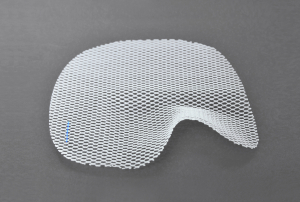DynaMesh
It all begins with a thread
In the beginning, there was not just any thread but a filament made of PVDF*: tear-resistant, biocompatible and smooth. PVDF “naturally” supplies many of the properties characteristic of an ideal implant. However, the thread first has to be warp-knitted into a textile structure. Not just anyhow but tailor-made for the relevant indication. The right stitch makes the difference.
Only through the right stitch can we achieve the “inner values” required, such as stability, elasticity and porosity. So the end result is not a “one fits all” implant but a specifically created DynaMesh® high-tech product.
Description
Product range
IPOM
- For the intraperitoneal onlay mesh technique in hernia surgery,
- optimal handling in laparoscopic and open techniques,
- and/or for repair of umbilical hernia with intraperitoneal mesh position.
CICAT
- For repair and prophylaxis of abdominal wall hernia with extraperitoneal mesh position,
- and/or for repair of umbilical hernia with extraperitoneal mesh position.
ENDOLAP
- For all preperitoneal techniques for repair of the inguinal hernia: endoscopic (TEP), laparoscopic (TAPP) or open.
ENDOLAP 3D
For ENDOscopic (TEP) and LAParoscopic (TAPP) techniques for inguinal and femoral hernia repair .
LICHTENSTEIN
For the repair of inguinal hernias using the Lichtenstein technique.
IPST
For the repair and prevention of parastomal hernia with intraperitoneal mesh position
*PVDF - Polyvinylidene Fluoride, can be made visible in MRI when requested.
DynaMesh® high-tech product
Description
DynaMesh products, excellent properties
Excellent properties
- High ageing resistance
It is not just experience that shows that PVDF provides lasting success in many surgical disciplines. A long-term study over seven years has demonstrated that the condition of the PVDF surface remains unchanged. Thread and warp-knitted fabric remain stable and nothing becomes brittle [2].
- Minimally reactive surface
If you want to minimise adverse foreign body reactions and scarring associated with textile implants,besides using biocompatible material you have to provide the least possible contact area. The following formula applies:thread surface = bioreactive surface area of the implant. Our implants have a comparatively minimal reactive surface area, which means that they cause the least possible foreign body reaction and scar tissue formation.
- Atraumatic selvedges
DynaMesh products are not simply cut from a flat piece of mesh. Using our special warp knitting machines we are able to produce smooth and therefore atraumatic selvedges (no “sawtooth” edges). These “soft” selvedges make it easy for the surgeon to place and adjust the implant – without irritating or even damaging the surrounding tissue. And the patient receives an implant with selvedges which will not “pinch” or cause other injury later on.
Superior Textile Engineering
- Optimal dynamometry
Textile implants must reinforce tissue, support muscles and protect organs. They have to cushion different forces without limiting mobility – including the extreme stresses associated with coughing, sneezing and laughing. What is needed therefore is an optimal interaction between predefined stability and elasticity. We achieve the optimal balance between these two properties.
- High tear propagation resistance
Conventional textile implants have a weak point: once torn or cut a zipper effect frequently occurs – the mesh continues to tear (mesh rupture). This does not happen with DynaMesh products. The multiple meshing technique used in our warp-knitted structures does not allow this unwanted effect to occur in the first place. Tear propagation resistance is one of the basic properties common to all our implants.
- Effective porosity
During incorporation the filaments are enclosed by an internal and external granuloma. When filament distance is too small there is a risk that the whole of the intervening space will be filled with scar tissue (closed pores). The scar plates that develop in this way cause patients great discomfort. Sufficiently large pores can prevent this.


